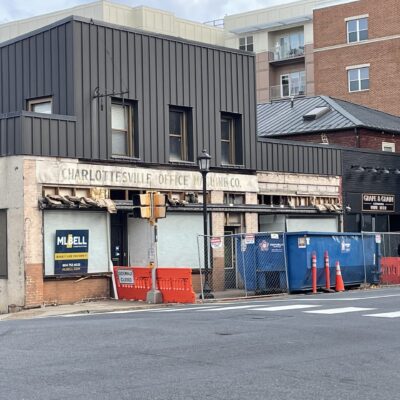Dear Ace: What’s this about Monticello and UVA being declared a UNESCO “World Heritage Site”?—Hester E. Buff
Hester: Sounds prestigious, huh? It is. This ain’t “world’s greatest grandpa” here; being a World Heritage Site is a pretty big deal. So who decides which sites get to bear that designation and how do they decide? Is it all just the clandestine machinations of the sinister dumbwaiter lobby, or something more? Ace checked in with UNESCO to find out.
 As if T.J. didn’t already have a big head: Monticello is now a UNESCO World Heritage Site. |
Declaring World Heritage Sites is one of the many duties of UNESCO—and Ace knows you know UNESCO stands for “United Nations Educational, Scientific, and Cultural Organization” and that the organization’s stated purpose is to “contribute to peace and security by promoting collaboration among the nations through education, science and culture.” (Ace is just reminding you in case you forgot.) UNESCO declares a certain place to be a World Heritage Site if it’s judged to be important to the world’s “cultural” heritage or to the world’s “natural” heritage. UNESCO often designates a particular place a World Heritage Site because it’s in danger of being destroyed or falling apart and must be conserved. (Ace is pretty sure Monticello’ll be all right, but it’s a nice thought, guys.)
Monticello-UVA is one of only eight “cultural” World Heritage Sites in the United States and one of only three post-Colonial cultural sites—the other two being the Statue of Liberty in New York City and Independence Hall in Philadelphia. The rest of the United States’ 19 heritage sites are “natural.” Only Australia has more natural sites, but we’re pretty lacking on the cultural front. Most of Europe’s got us beat, as do Mexico, China, India and a few others. Italy’s got 39 of the damn things! So what makes Monticello and UVA so special that they’re on such a short list?
According to UNESCO’s 1987 Advisory Body Evaluation, which made Jefferson’s house and school a combined World Heritage Site, the two are special because of the beauty of T.J.’s Palladian, neo-classical architecture and because of their association with Jefferson’s ideals. The evaluation concludes: “These works of perfection, where the difficult passage from Utopia to reality is harmoniously achieved, are directly inspired by the very same principles which led to Jefferson’s Declaration of Independence (1776) and his project for the abolition of slavery (1800).” (Sorry, what project was that?) O.K., so sifting through all that elevated language: Monticello and UVA, together, make a World Heritage Site because they’re right purty and they’re related to the ideals of our founding fathers. Ace’ll take it.





